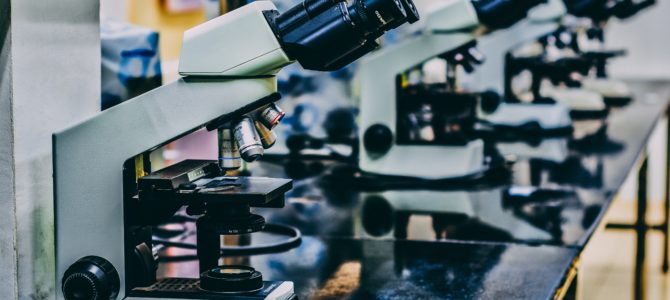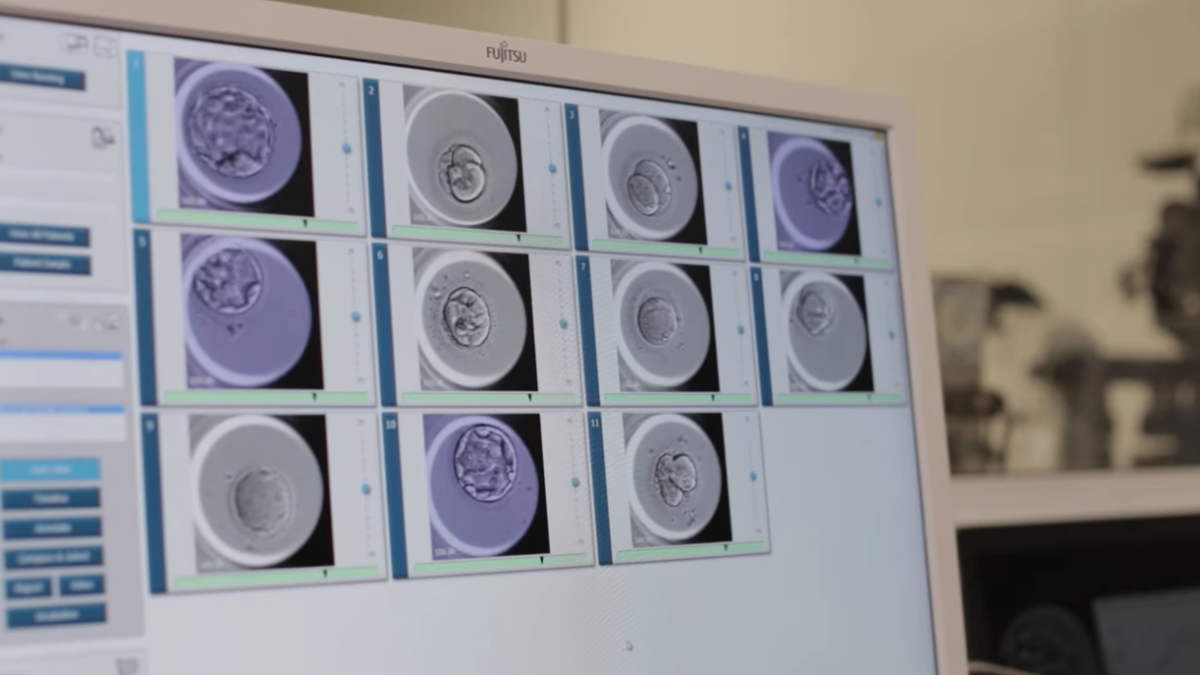
“The Supreme Court kept me from my freedom.” — Dred Scott
The U.S. Supreme Court’s landmark 1857 decision, Dred Scott v. Sandford, erroneously and shamefully held that the Constitution could never confer American rights and privileges to black people. Today’s courts risk a similarly disgraceful stain on their reputation by neglecting to keep pace with life science, especially embryology.
Scientific advancement in fertility has now moved four decades beyond “test tube baby” Louise Brown, conceived outside the womb via in vitro fertilization (IVF) in a petri dish. Cryogenically preserved embryos, while not commonplace, are no longer rare, and custody battles have rocked courtrooms and gossip programming. The problem surrounding the legal assignment of custody for preserved embryos is that courts are more prone to address these tiny new humans as property rather than the offspring they truly are.
The science of embryology has documented the development of human life prior to implantation in the womb, yet the legal process is way behind the science in failing to recognize them as developing human beings. In the same way that the high court fell victim to errant understanding in the discreditable days of slavery, the judicial system is missing the mark on conceived, pre-implanted, fully human embryos.
Embryos are organisms, not cells or tissue. IVF clinics do not store dead embryos, but viable embryos intended to continue life. These cryogenically preserved children are human beings, and the 13th Amendment unflinchingly removes human beings from the category of property to be owned.
Distinct Beings, From Conception Onwards
This week, the National Embryo Donation Center celebrates the births of 800 children, implanted as embryos in women who are not their genetic mothers. These children, birthed and parented by their adoptive mothers, have been separate beings from conception.
Sadly, legal case precedent still treats these embryos as property, mislabeling them as cells or tissue. The courts do not recognize what science has proven: when human life is created, human development begins.
When divorcing couples dispute the fate of their embryos, current case precedent is based on a 1992 Tennessee Supreme Court decision, Davis v. Davis, which in dicta classified embryos as belonging to an interim legal status between person and property. The next embryo fate dispute case, Kass v. Kass, let the embryos be treated as property to awarded to the clinic by contract. Those seeking disposal of frozen embryos mistakenly claim a “right not to procreate,” which is a moot point as the embryo only exists after procreation.
Limited by a lack of current information about embryonic development, Davis erroneously opined the “pre-embryo” was human tissue, agreeing with the American Fertility Society that “the first cellular differentiation relates to the physiological interaction with the mother, rather than the establishment of the embryo itself.” However, this is primarily rhetorical and not scientific, as the embryo undergoes one continuous, self-directed existence from sperm-egg fusion through the prenatal life to birth and after. The Davis case was decided before studies and time-lapse photography of early human embryonic development had taken place.
In contrast, the trial court in Davis had found, based on genetics, that the embryos were human beings and had properly applied a “best interest of the child” standard to decide their fate. However, the Davis Tennessee Supreme Court denied the embryos were existing human beings. In the decision, a law review by John A. Robertson was referenced. American Fertility Society advisor John A. Robertson’s, 1990 law review claimed that the “early embryos, while genetically unique, consist of a few undifferentiated cells that will first form the placenta before the embryo itself develops.” Robertson’s “biologic reality” is contrary to modern scientific fact.
Dr. Robert Edwards, one of the IVF pioneers who successfully engineered Louise Brown’s conception, has detailed how both the inner cell mass components that give rise to the human body and the components that give rise to placental cells are simultaneously present in the embryo prior to implantation.
Learning More About Human Embryos
Similarly, Dr. Renee Reijo Pera, former director of Stanford’s Center for Human Pluripotent Stem Cell Research and Education, studied human embryos with time-lapse photography and published how individual embryonic cells behave differently. The visual differences among the cell’s composition and behavior within the embryo prior to implantation can be easily observed.
The Virtual Human Embryo database shows an embryo about four to five days old that was washed from a uterus after insemination, then transferred to the uterus of an infertile woman, where the embryo continued development through birth. The Virtual Human Embryo photo distinctly identifies the inner cell mass giving rise to the human body, and trophoblast cells giving rise to the placenta, visible in the embryo before implantation.
One arena in which the law has understood the clear distinction between an embryo and cells is in permitting federally funded research on embryonic cells but refusing to fund embryo destruction for research.
Robertson’s law review, overlooking the biologic fact that an embryo is already a human being in development, recommended “that the party wishing to avoid reproduction should prevail whenever the other party has a reasonable chance of becoming a parent by other means.” His erroneous understanding of the facts of life has created a prejudicial legal environment that puts a parent wishing to preserve their embryonic child at a serious disadvantage and condemns that child to death, despite the presence of a parent willing to take full responsibility for that baby.
Recent embryo custody disputes, McQueen v. Gadberry (2016, Missouri) and Rooks v. Rooks (2018, Colorado), both referenced old secondary sources claiming “pre-embryo” as an accurate term, despite the fact that Davis‘s ruling that the embryo is only a “pre-embryo” before day 14, is not how the embryo is described today in scientific literature. Embryos prior to implantation in a womb are developing, and not “pre-embryos” or “pre-humans.” These cases each failed to recognize modern scientific findings that development of the cells giving rise to the human body begins at conception, not at implantation.
In Bilbao v. Goodwin (2017, Connecticut), the mother of cryogenically preserved embryos wanted them destroyed, rather than “placed for adoption by strangers.” The father wanted the lives of his offspring spared. A trial court ruled that the mother’s interest in “her eggs” outweighed the defendant’s interest in continued preservation or adoption of the embryos. The case moved to the Connecticut Supreme Court, where an amicus brief from the American Association of Pro-Life Obstetricians and Gynecologists emphasized that the plaintiff’s “eggs” no longer exist after fertilization has occurred because each human embryo involved is a purposefully created human organism with his or her own unique DNA.
The Heartbreaking Case of Embryo Loss
A storage tank failure that caused the loss of stored embryos resulted in a lawsuit brought by their parents. In Penniman v. University Hospitals Health System (2019, Ohio), the court claimed that one of the reasons the embryos were not persons because an embryo could not “on its own, become a child.” One must surely acknowledge that a newborn cannot, unaided, become a child either. All humans need food and shelter to survive.
The Declaration of Independence ensures parents an inalienable right to protect their offspring as part of their right to life, liberty, and the pursuit of happiness, as affirmed in 1972’s Stanley v. Illinois, when the U.S. Supreme Court declared that the rights to conceive and to raise one’s children have been deemed “essential,” basic civil rights of man, and “far more precious … than property rights.”
There is no mystery to when human life begins. Just as the sun starts the day, fertilization starts a developing life which ends at death. Courts do not create genetic parentage or offspring; people do. There can be no uncreation of life—life can only end in death.
The courts got it wrong in 1857 when they declared that Dred Scott was not deserving of human rights. Ratified in 1865, the 13th Amendment ended one era of treating humans as property. Today’s courts are all too often depriving humans created through IVF of the unalienable rights with which they are endowed.
Human embryos are people, not property, and the lesson of slavery should cause all Americans to refuse to label any class as subhuman or unequal. The fates of embryonic children as decided by courts must be, as they are for any child, in their best interests.
UPDATE: For additional detail on embryo case law and bibliographic sources, click here.








